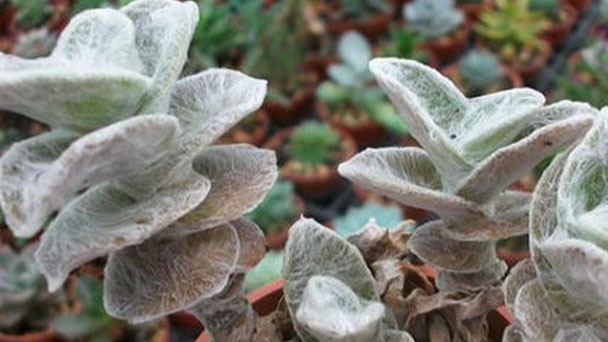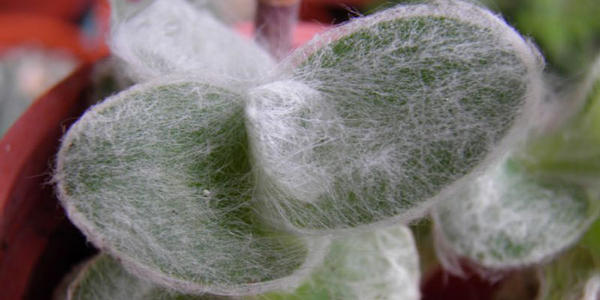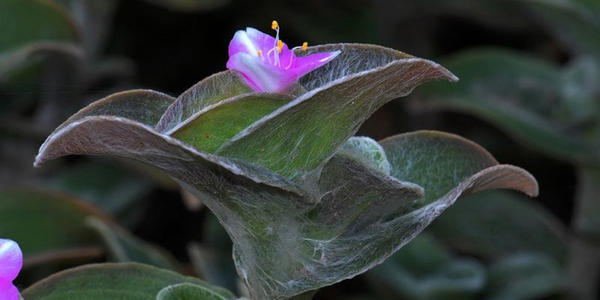How to Grow and Care for Cobweb Spiderwort
Written by Maggie
Dec 02 2021

Cobweb spiderwort, is a fleshy genus of Aperaceae, is a variety of Cobweb spiderwort. In fact, it is not difficult to grow and care for Cobweb spiderwort, and there is not so much need to pay special attention to the place. Let's talk about how to grow and care for Cobweb spiderwort specifically.
Soil care for cobweb spiderwort.
When we grow and care for Cobweb spiderwort, the basin soil is loose and fertile, with good drainage ventilation.
Temperature care for cobweb spiderwort
When we grow and care for Cobweb spiderwort, the optimum temperature for cobweb spiderwort growth was 16 ~ 24℃.
Light care for cobweb spiderwort
Under this condition, the plant can be placed in a place with bright light and no direct sunlight for maintenance. When we grow and care for Cobweb spiderwort, if the light is insufficient, the plant will grow fruitless, the distance between leaves will be elongated, the white hairs on the stem and leaves will be sparse. If the light is too strong, the leaves will show dark green, and the growth will slow down until the growth stops.

Watering care for growing cobweb spiderwort
In the growing season, dry and then watering, water does not often drenched plants. If ventilation is not good, it will cause leaf decay. So when we grow and care for Cobweb Spiderwort, water in the soil, normal growth of the leaves can be washed with water, but must be quickly dry, so that you can keep the leaves clean.
Trimming care for cobweb spiderwort
Cobweb Spiderwort can be trimmed during potting. When we grow and care for Cobweb Spiderwort, the densely growing plants can be removed from the pot, and the roots can be divided and planted. Alternatively, the stems with top tips can be cut in sand or vermiculite for cutting during the growing season.
Growing cobweb spiderwort care in 4 seasons
Cobweb Spiderwort is the growing season in spring and autumn, which can be covered in full sunshine. In summer, it can be properly shaded and ventilated, otherwise it will cause the plant to rot due to heat and humidity. When we grow and care for Cobweb Spiderwort, give water to the pot in the summer to keep the root system from drying out too much.
In winter the temperature is lower than 5 degrees and will gradually cut off water, 3 degrees below the basin soil dry, try to keep it not lower than zero, so you can safely spend the winter.

Latest Updated
- Benefits of Bugleweed - 7 Science-backed Health Benefits
- Bugleweed Dangers & Side Effects - Is It Poisonous?
- How to Plant Evergreen Trees - What You Should Know
- When to Plant Evergreens - Grow Guide for Evergreen Trees
- 12 Wonderful Evergreen Shrubs for Your Garden
- 12 Popular Evergreen Plants with Pictures for Beginners
- When And How To Prune A Lilac Bush Like a Pro
- How to Grow & Care for Lilac Vine (Hardenbergia Violacea)
- Japanese Lilac Tree (Syringa Reticulata) Care & Propagation Guide
- Shumard Oak Pros and Cons - What to Know
Popular Articles
- Winter maintenance of Antirrhinum Majus
- How to Grow Terminalia Mantaly Tree
- How to Grow and Care for Crossostephium Chinense
- How to grow Antirrhinum Majus in spring
- Peristeria Elata (Dove Orchid) Profile: Info & Care Guide
- Underwatered Snake Plant (Sansevieria Trifasciata) - Signs And How To Fix
- How to Care for Brazilian Jasmine Plant (Mandevilla Sanderi)
- How to Grow & Care for Graptopetalum Purple Delight in Summer
- Rosa Chinensis (China Rose): Plant Growing & Care Tips
- How to Care for Baby Sun Rose (Aptenia Cordifolia)